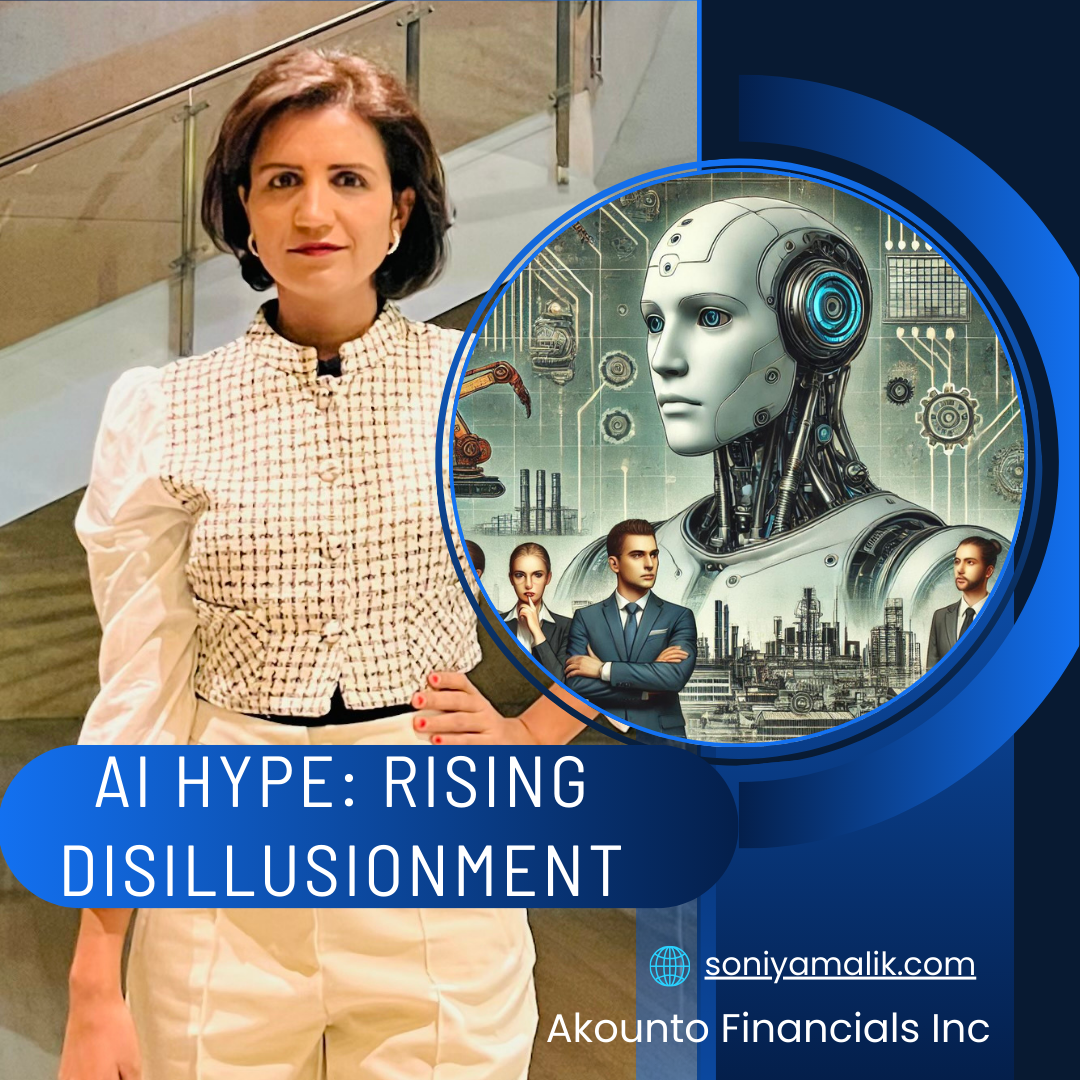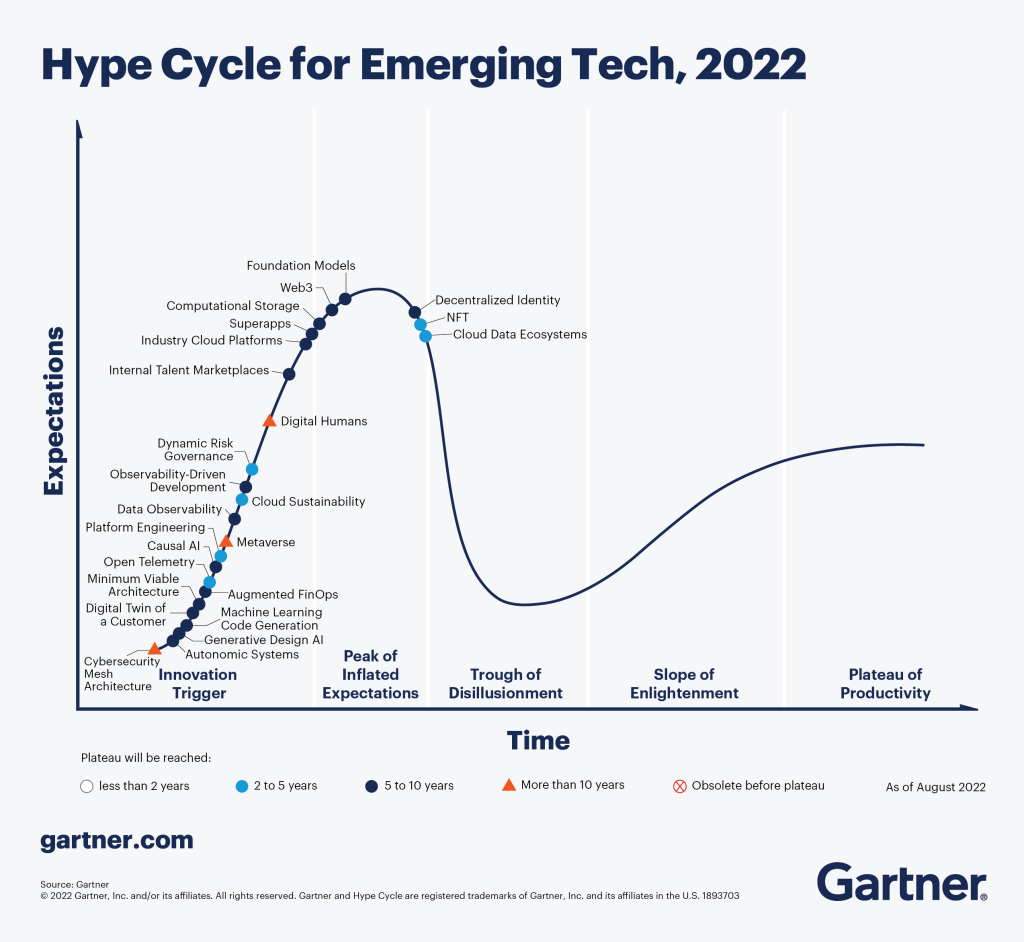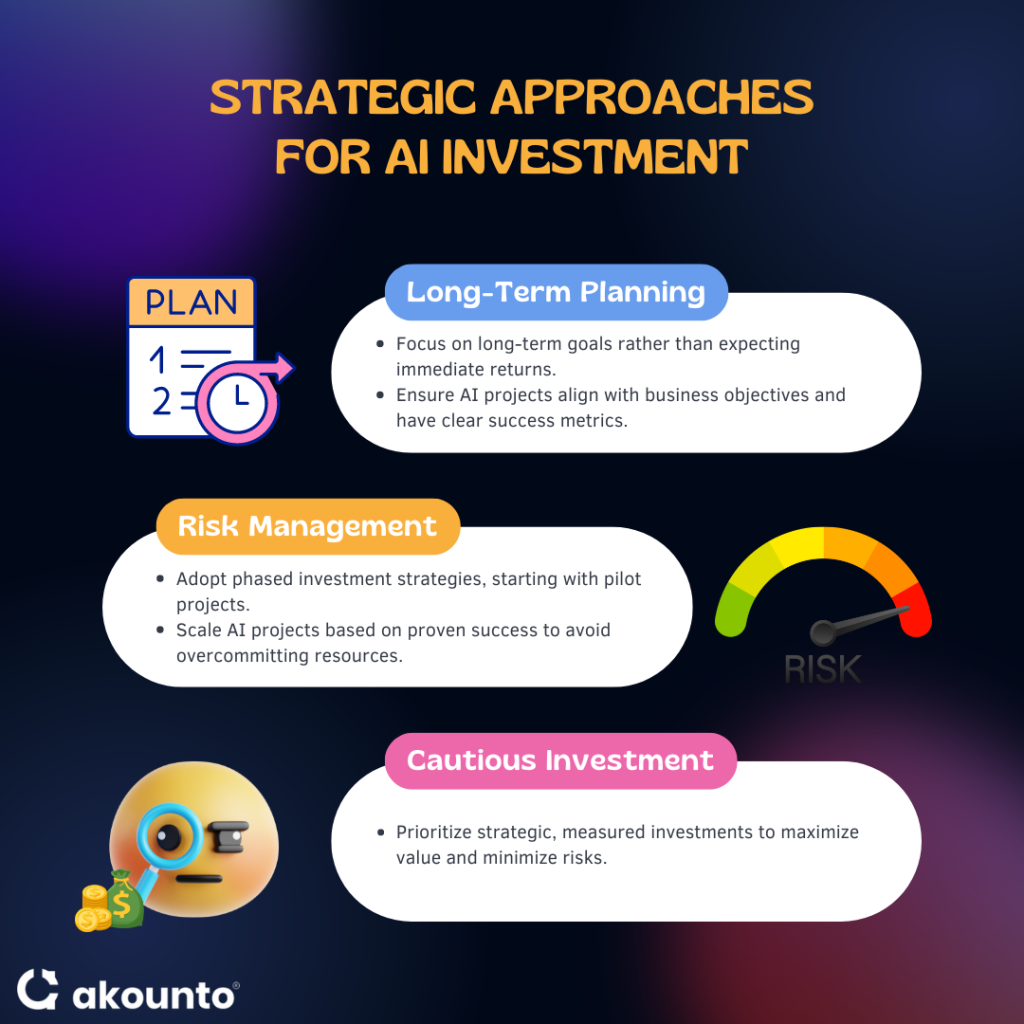AI Hype: Rising Disillusionment

AI Hype: Rising Disillusionment
The significant decline in AI-related stocks has led to substantial financial losses in the U.S. market, with several prominent AI companies experiencing sharp drops in their stock values. For example, C3.ai has seen its stock price drop by over 44% in 2024, reflecting the broader market's growing skepticism about the immediate profitability of AI investments. Similarly, Palantir Technologies has also faced volatility, with its stock experiencing a considerable decline as investors reassess the potential returns from AI technologies.
AI initially generated immense hype, with many viewing it as the pinnacle of human innovation, capable of transforming every industry. However, as the technology's limitations became more apparent, it became clear that AI is meant to assist and enhance human capabilities, not replace them entirely. This disconnect between expectation and reality has fueled growing disillusionment among investors and the public.
The public's first major encounter with AI came through OpenAI's ChatGPT, which quickly captured widespread attention and sparked a wave of interest in generative AI. However, AI technologies have been around for years, with earlier examples like IBM's Watson, known for its success on Jeopardy! and Google's DeepMind, recognized for its AlphaGo program, pioneering the field. These earlier technologies set the stage for the current AI landscape but did not achieve the same level of mainstream recognition.
What is AI and Generative AI?
What is Artificial Intelligence (AI)?
Artificial Intelligence (AI) refers to the development of computer systems that can perform tasks typically requiring human intelligence. These tasks include learning from experience, understanding natural language, recognizing patterns, solving complex problems, and making decisions. AI systems are designed to automate processes and improve efficiency across various industries, from healthcare and finance to manufacturing and logistics. The overarching goal of AI is to create machines that can think, learn, and adapt in a manner similar to humans, thereby enhancing productivity and enabling new levels of innovation across different sectors.
What is Generative AI?
Generative AI is a subset of artificial intelligence focused on creating new content, such as text, images, music, and even code. Unlike traditional AI, which is primarily concerned with processing information and making predictions based on existing data, generative AI actively produces original content by learning patterns from vast datasets. This technology powers applications like text generation in chatbots, image creation in digital art, and music composition. Generative AI models, such as those used in OpenAI’s GPT-4 or Google's Bard, represent a significant leap in AI capabilities, moving from data analysis to creative content generation.
Examples of AI Companies and Their Products
Several leading companies are at the forefront of AI and generative AI development. OpenAI, for instance, has gained global recognition for its ChatGPT, a powerful language model capable of generating human-like text based on user prompts. Google has introduced Bard, another advanced generative AI model designed to enhance search capabilities and provide more interactive responses. Microsoft, through its AI-driven Copilot, integrates generative AI into its Office suite, offering real-time assistance in tasks like writing and data analysis. These products showcase the growing influence of AI in everyday applications and highlight the competitive landscape among tech giants in the AI space
The AI Wonderland: What Fuelled Expectations?
Media’s Influence on AI Expectations
Movies like iRobot and The Terminator present AI as either a benevolent helper or a formidable threat, capable of surpassing human intelligence and autonomy. These narratives, while captivating, have led many to believe that AI can achieve levels of consciousness and self-awareness that are far beyond current technological capabilities.
Netflix series like Black Mirror explore dystopian futures where AI controls or significantly disrupts human life, further fueling both fascination and fear about the potential of AI. These portrayals, though fictional, have deeply influenced how society views AI, often blurring the line between science fiction and reality.
Humanoids and Elevated Expectations
Companies like Boston Dynamics and Hanson Robotics have made headlines with their advanced humanoid robots, such as Atlas and Sophia, respectively. These robots, designed to mimic human movements and expressions, have sparked both awe and speculation about the future of AI. Sophia, for example, has been granted citizenship in Saudi Arabia and often participates in interviews and public appearances, showcasing her conversational abilities.
While these robots represent significant technological advancements, they are still far from the fully autonomous, self-aware entities often depicted in movies. The gap between the conceptual innovations in humanoids and their actual capabilities underscores the ongoing challenge of meeting the high expectations set by popular media.
Levels of AI and Their Applications
AI can be categorized into three levels: Narrow AI, General AI, and Superintelligent AI.
- Narrow AI, also known as weak AI, is designed to perform specific tasks, such as language translation or facial recognition, and is the most prevalent form of AI today.
- General AI, or strong AI, refers to a system that can perform any intellectual task that a human can, but this level of AI remains theoretical and has not yet been achieved.
- Superintelligent AI, which surpasses human intelligence, is often the subject of speculative fiction but is not a reality.
Currently, Narrow AI applications are widely used across industries, including healthcare for diagnostics, finance for algorithmic trading, and customer service for chatbots. The potential development of General AI and Superintelligent AI continues to be a topic of intense research and debate, with profound implications for the future of technology and society.
“Popular imagination is leading the fears and fantasies of artificial intelligence in a larger public life and business processes. A reality-check or correction in perception is inevitable to streamline markets, emotions and investments related to artificial intelligence.”
Soniya Malik - Founder & CEO, Akounto Financial Inc
Understanding the Gartner Hype Cycle
The Gartner Hype Cycle is a visual representation that tracks the maturity, adoption, and social application of emerging technologies. The cycle consists of five phases: the "Innovation Trigger," "Peak of Inflated Expectations," "Trough of Disillusionment," "Slope of Enlightenment," and "Plateau of Productivity."

The Gartner Hype Cycle is widely used by businesses and analysts to gauge the current state of technologies, including generative AI, and to make informed decisions on when to invest in or adopt these technologies.
Generative AI, which captured global attention with breakthroughs like OpenAI's ChatGPT, initially surged to the "Peak of Inflated Expectations" as the public and investors alike imagined transformative impacts across industries.
According to Gartner's 2024 report, generative AI has now descended into the "Trough of Disillusionment." This phase reflects the growing realization that the technology, while promising, has significant limitations and challenges, such as high costs, ethical concerns, and difficulties in scaling practical applications.
This transition suggests that while generative AI still holds potential, its future development will likely involve more measured, incremental progress rather than the sweeping, revolutionary changes initially anticipated.
The Financial Burden of AI with Limited Returns
High Costs of AI Development
Developing AI technologies involves substantial financial commitments. Companies need to invest heavily in talent, with AI specialists and data scientists often earning more than $150,000 annually. In addition, the computational infrastructure required to train and deploy AI models is costly, with the training of a single advanced AI model potentially reaching $4.6 million. This is further compounded by ongoing research and development (R&D) costs, which are essential for keeping pace with the rapid advancements in AI technology. These factors make AI development a resource-intensive and expensive undertaking.
The Gap Between Investment and Returns
Despite these significant investments, the financial returns from AI have been disappointing. Companies like C3.ai and Palantir, once seen as leaders in the AI sector, have experienced substantial drops in their stock prices—C3.ai, for instance, saw its stock value fall by over 44% in 2024. This gap between investment and actual returns has led to decreased investor confidence and greater scrutiny of AI’s economic viability, causing stock volatility and a more cautious approach to further AI investments.
The Future of AI Post-Disillusionment
Moving Toward Realism
- Shift in Focus:
- AI industry is moving from overblown expectations to practical, incremental advancements.
- Emphasis on improving AI reliability, scalability, and addressing ethical concerns.
- Realistic applications in healthcare diagnostics, customer service automation, and supply chain optimization.
- Transition from the idea of AI revolutionizing every sector to targeting specific, achievable goals.
- Healthier, balanced perspective on AI’s potential, focusing on measurable outcomes.
Strategic Approaches for AI Investment

- Long-Term Planning:
- Focus on long-term goals rather than expecting immediate returns.
- Ensure AI projects align with business objectives and have clear success metrics.
- Risk Management:
- Adopt phased investment strategies, starting with pilot projects.
- Scale AI projects based on proven success to avoid overcommitting resources.
- Cautious Investment:
- Prioritize strategic, measured investments to maximize value and minimize risks.
Conclusion
AI's journey from hype to disillusionment has underscored the need for a more grounded approach to its development and investment. While the initial excitement led to inflated expectations, the industry is now shifting toward realistic, practical applications that offer tangible benefits. This shift encourages a focus on long-term planning and strategic investment, ensuring that AI's true potential is realized in a sustainable and impactful way. As AI continues to evolve, those who adopt a measured, thoughtful approach will be best positioned to succeed in this rapidly changing landscape.




